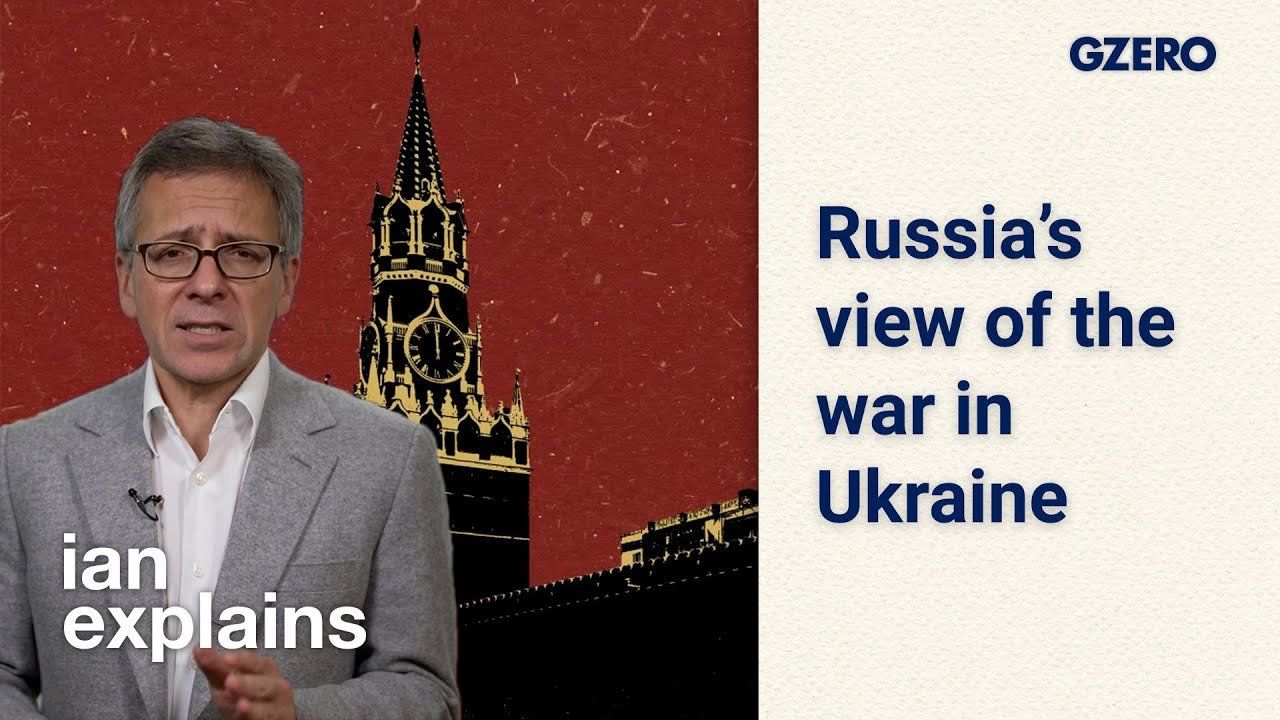Ian Explains
Ian Explains: What the war in Ukraine looks like inside Russia

Ian Explains: What the war in Ukraine looks like inside Russia | GZERO World

Why do so many Russians continue to support the war in Ukraine? And what does public support even mean in a country with no viable political opposition, no independent media, and an autocratic government bent on controlling the narrative?
On Ian Explains, Ian Bremmer takes a look at the Russian media landscape and breaks down why Russians see the Ukraine invasion as an existential battle for the future of the country. Popular political talk shows, watched by millions of Russians in prime time every night, reflect the Kremlin’s messaging priorities and magnify themes established by Putin himself --- namely, that the collapse of the Soviet Union was the “greatest geopolitical catastrophe of the 20th century” and the collective West, led by the United States, wants to destroy Russia.
The messaging on Russian TV will be critical for the Kremlin to maintain support as the highly-anticipated Ukrainian counteroffensive kicks off in earnest. And after 24 hours of chaos following Wagner Group head Yevgevny Priogzhin’s armed rebellion against the Russian military, sudden reversal, and exodus to Belarus, Putin needs to project an image of total stability and complete control.
Will Putin be able to control the message after such a brazen, public challenge to his authority? And how is the Ukrainian counteroffensive playing inside Russia?
Watch Ian Explains for the full breakdown, and for more on Russia, watch GZERO World with Ian Bremmer on US public television and at gzeromedia.com/gzeroworld.
America’s new National Security Strategy confirms what Europeans have feared for months: Washington now sees a strong, unified European Union as a problem to be solved, not an ally to be supported.
In this episode of Tools and Weapons, Microsoft Vice Chair and President Brad Smith sits down with Ed Policy, President and CEO of the Green Bay Packers, to discuss how purpose-driven leadership and innovation are shaping the future of one of the world’s most iconic sports franchises. Ed shares how technology and community-focused initiatives, from Titletown Tech to health and safety innovations on the field, are transforming not just the game of football, but the economy and culture of Green Bay itself. He explains how combining strategic vision with investment in local startups is keeping talent in the Midwest and creating opportunities that extend far beyond Lambeau Field.
Subscribe and find new episodes monthly, wherever you listen to podcasts.
More than a week after Hondurans cast their ballots in a presidential election, the country is still stuck in a potentially-dangerous post-election fog.